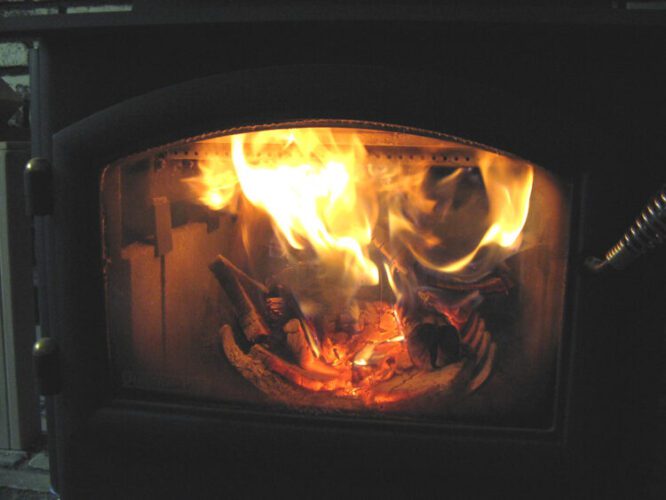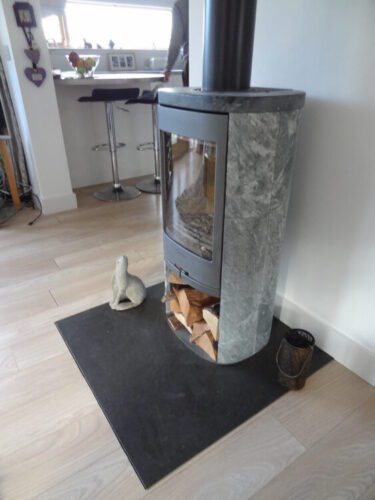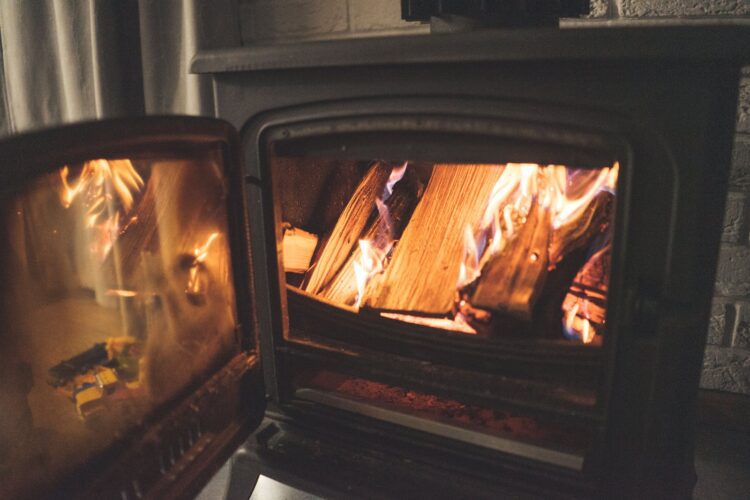Wood burning stoves have been a timeless source of warmth and comfort in homes around the world. However, as environmental concerns and energy efficiency become increasingly important, the spotlight has shifted towards more sustainable and eco-friendly heating options. Glass fronted wood burning stoves have emerged as a promising solution, combining the traditional charm of a wood fire with modern energy-efficient technology. In this article, we delve into the world of energy efficiency in wood burning stoves, with a specific focus on the benefits, factors affecting efficiency, tips for optimization, comparisons with traditional fireplaces, dispelling common misconceptions, selecting the right stove, and maintenance and care practices.
Understanding Energy Efficiency in Wood Burning Stoves
Before delving into the specifics of glass fronted stoves, it’s crucial to understand the concept of energy efficiency in wood burning appliances. Energy efficiency refers to the ability of a stove to convert the energy stored in wood into heat for your home. Traditional open fireplaces are notorious for their inefficiency, as a significant portion of the heat produced escapes through the chimney. Glass fronted stoves, however, are designed to capture and radiate more heat into the room, making them a more efficient choice.
Benefits of Glass Fronted Wood Burning Stoves
Glass fronted stoves offer several advantages over their open counterparts. The most noticeable benefit is their improved efficiency, leading to better heat distribution and utilization. The sealed glass front acts as a barrier, preventing warm air from escaping while allowing a clear view of the flames. This not only enhances the aesthetic appeal but also serves a functional purpose by ensuring a controlled and efficient burn.
Furthermore, these stoves are often equipped with air wash systems that help keep the glass clean, providing an uninterrupted view of the fire. This feature not only adds to the visual experience but also contributes to the stove’s efficiency by allowing more radiant heat to penetrate the room.
Factors Affecting the Efficiency of Glass Fronted Wood Burning Stoves
Several factors influence the efficiency of glass fronted wood burning stoves. The design and construction of the stove play a crucial role, with features like a well-insulated firebox, air control mechanisms, and airtight seals contributing to better performance. Additionally, the type and quality of wood used impact efficiency, as well-seasoned hardwoods tend to burn more efficiently than green or softwoods.
The size of the stove in relation to the space it’s intended to heat is another critical factor. Choosing an appropriately sized stove ensures optimal performance, preventing over or underutilization of the appliance. Proper installation, including the positioning of the stove and the venting system, is also essential for maximizing efficiency.
Tips for Maximizing the Efficiency of Glass Fronted Wood Burning Stoves
To fully reap the benefits of a glass fronted wood burning stove, homeowners can implement several practical tips. Regular maintenance, including cleaning the glass, inspecting seals, and removing creosote buildup, is crucial for sustained efficiency. Using well-seasoned hardwoods with low moisture content contributes to cleaner burns and increased heat output.
Effective operation of the air controls is another key aspect. Learning to balance the intake and exhaust air ensures a controlled and efficient burn. Additionally, utilizing the stove’s heat output by placing it in a central location can facilitate better heat distribution throughout the living space.
Comparing Glass Fronted Wood Burning Stoves to Traditional Open Fireplaces
A common dilemma faced by homeowners is whether to opt for a glass fronted stove or stick with the traditional open fireplace. While the latter holds nostalgic appeal, it falls short in terms of energy efficiency. Open fireplaces are notorious for drawing warm air from the room and allowing a significant amount of heat to escape through the chimney.
Glass fronted stoves, on the other hand, present a more efficient alternative. By containing the heat and directing it into the room, these stoves not only provide a warmer and more comfortable environment but also contribute to lower fuel consumption, making them a more sustainable choice.
Common Misconceptions about Glass Fronted Wood Burning Stoves
Despite their numerous benefits, glass fronted stoves are not without their share of misconceptions. One common myth is that these stoves are solely for aesthetic purposes and do not offer practical heating benefits. In reality, their design and technology make them highly efficient heaters that can significantly contribute to home comfort.
Another misconception revolves around the assumption that glass fronted stoves are challenging to maintain. While proper care is necessary, routine maintenance tasks are manageable and contribute to the longevity and performance of the stove.
Choosing the Right Glass Fronted Wood Burning Stove for Your Home
Selecting the right glass fronted stove requires careful consideration of various factors. The size of the stove should match the heating needs of the space, and the design should complement the overall aesthetics of the room. Energy efficiency ratings and certifications can guide homeowners in choosing a stove that meets industry standards.
Furthermore, consulting with professionals or seeking recommendations from experienced stove users can provide valuable insights into the performance and reliability of different stove models. It’s essential to strike a balance between style and functionality to ensure the stove not only enhances the ambiance but also serves as an effective heating solution.
Maintenance and Care for Glass Fronted Wood Burning Stoves
Proper maintenance is vital for the longevity and efficiency of glass fronted wood burning stoves. Regular cleaning of the glass with a recommended cleaner helps preserve visibility and ensures the heat radiates effectively. Inspection of gaskets and seals is essential to prevent air leaks that can compromise efficiency.
Annual chimney inspections and cleaning are critical to remove creosote buildup and maintain proper ventilation. Stovepipes and flue systems should also be inspected for any signs of damage or obstruction. Following manufacturer guidelines for maintenance tasks and adhering to a regular schedule can contribute to the stove’s optimal performance over the years.
In conclusion, glass fronted wood burning stoves represent a modern and energy-efficient alternative to traditional open fireplaces. Understanding the principles of energy efficiency in these stoves, appreciating their benefits, and addressing factors that influence performance are key to making an informed choice. By following practical tips for optimization, dispelling common misconceptions, and selecting the right stove for your home, you can enjoy both the warmth of a wood fire and the satisfaction of contributing to a more sustainable and eco-friendly living environment. Regular maintenance and care practices further ensure the longevity and efficiency of glass fronted wood burning stoves, making them a reliable and practical heating solution for homes.

Frequently Asked Questions (FAQ) – Glass Fronted Wood Burning Stoves
Q1: How do glass fronted wood burning stoves differ from traditional open fireplaces in terms of energy efficiency?
A1: Glass fronted stoves are designed with sealed glass doors, preventing warm air from escaping and directing heat into the room. In contrast, traditional open fireplaces are known for drawing warm air from the room and allowing heat to escape through the chimney, making them less energy-efficient.
Q2: What are the key benefits of using glass fronted wood burning stoves?
A2: Glass fronted stoves offer improved energy efficiency, better heat distribution, and a clear view of the flames. They contribute to a warmer and more comfortable living space while minimizing fuel consumption. Additionally, their design adds aesthetic appeal to any room.
Q3: How can I maximize the efficiency of my glass fronted wood burning stove?
A3: Regular maintenance, including cleaning the glass, inspecting seals, and removing creosote buildup, is crucial. Using well-seasoned hardwoods with low moisture content, balancing air controls, and placing the stove centrally in the room can also optimize its performance.
Q4: Are glass fronted stoves difficult to maintain?
A4: While proper care is essential, routine maintenance tasks for glass fronted stoves are manageable. Cleaning the glass, inspecting gaskets, and annual chimney inspections are standard practices to ensure optimal performance.
Q5: Can glass fronted stoves be used as the primary heating source for a home?
A5: Yes, glass fronted stoves can serve as effective primary heating sources, especially in well-insulated spaces. Choosing the right size stove for the room and following recommended maintenance practices are crucial for optimal performance.
Q6: Are glass fronted wood burning stoves environmentally friendly?
A6: Glass fronted stoves are more environmentally friendly compared to traditional open fireplaces. Their improved efficiency leads to lower fuel consumption, reducing emissions and environmental impact.
Q7: How do I choose the right glass fronted wood burning stove for my home?
A7: Consider factors such as stove size, design, energy efficiency ratings, and industry certifications. Consulting with professionals or seeking recommendations from experienced users can provide valuable insights.
Q8: Can glass fronted stoves be installed in any home?
A8: Glass fronted stoves can be installed in most homes, but proper installation is crucial. Factors such as space, ventilation, and compliance with local building codes should be considered. Professional installation is recommended for safety and efficiency.
Q9: Do glass fronted stoves require special types of wood for optimal performance?
A9: While glass fronted stoves can burn various types of wood, using well-seasoned hardwoods with low moisture content is recommended for cleaner burns and increased heat output.
Q10: How long do glass fronted wood burning stoves typically last?
A10: The lifespan of a glass fronted stove depends on factors such as usage, maintenance, and build quality. With proper care and regular maintenance, these stoves can last for many years, providing reliable heating for your home.


